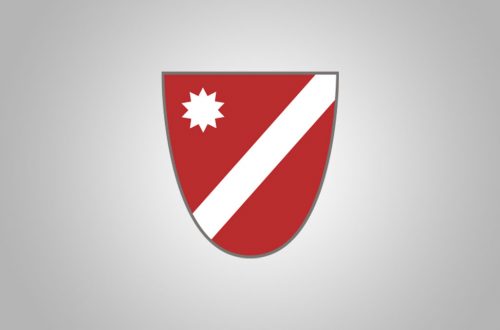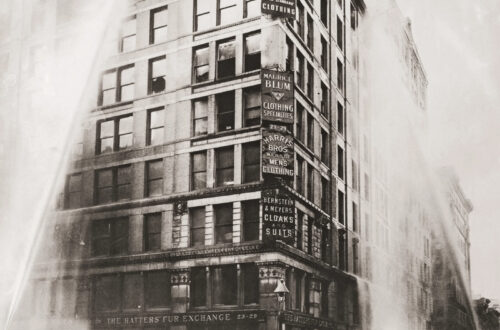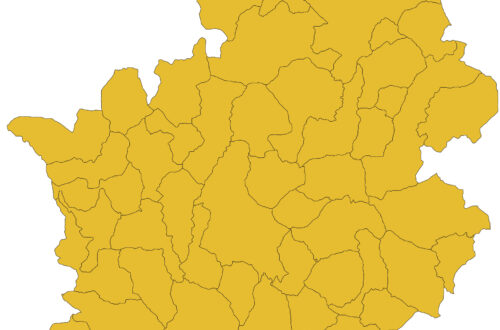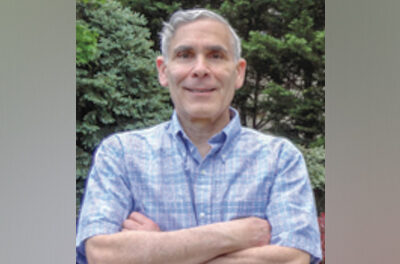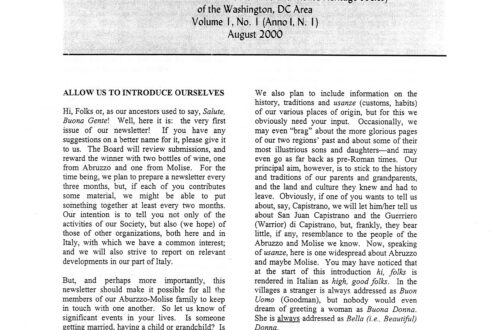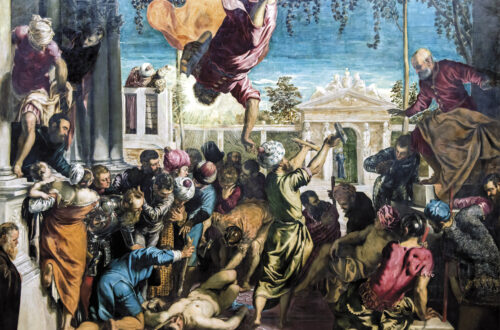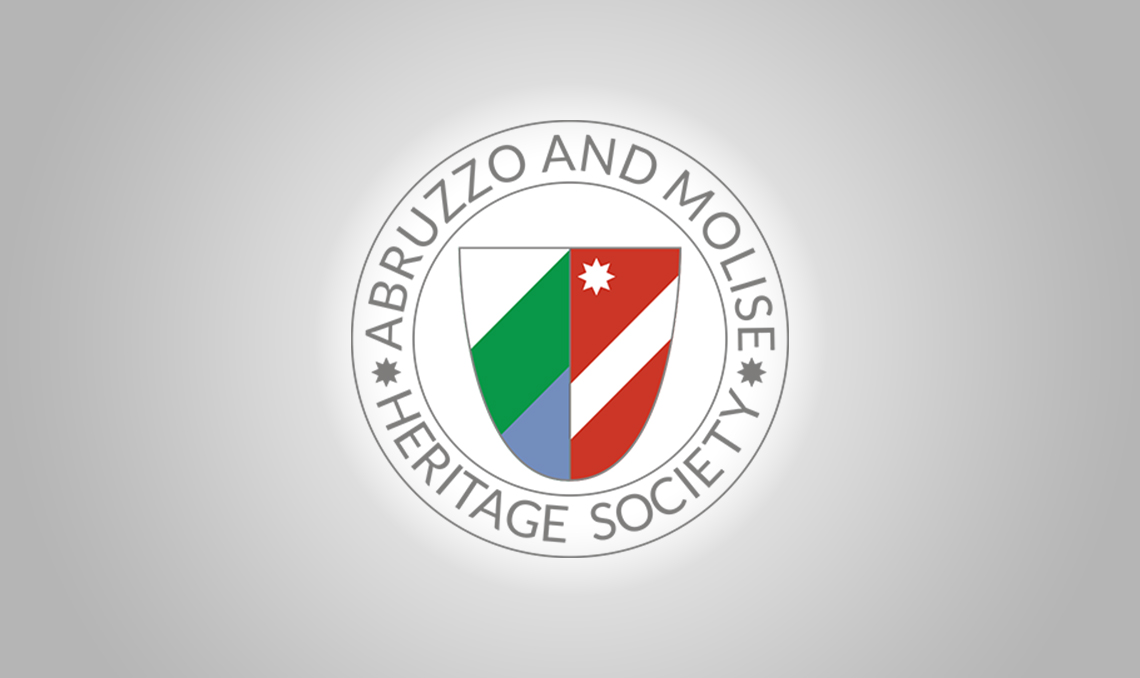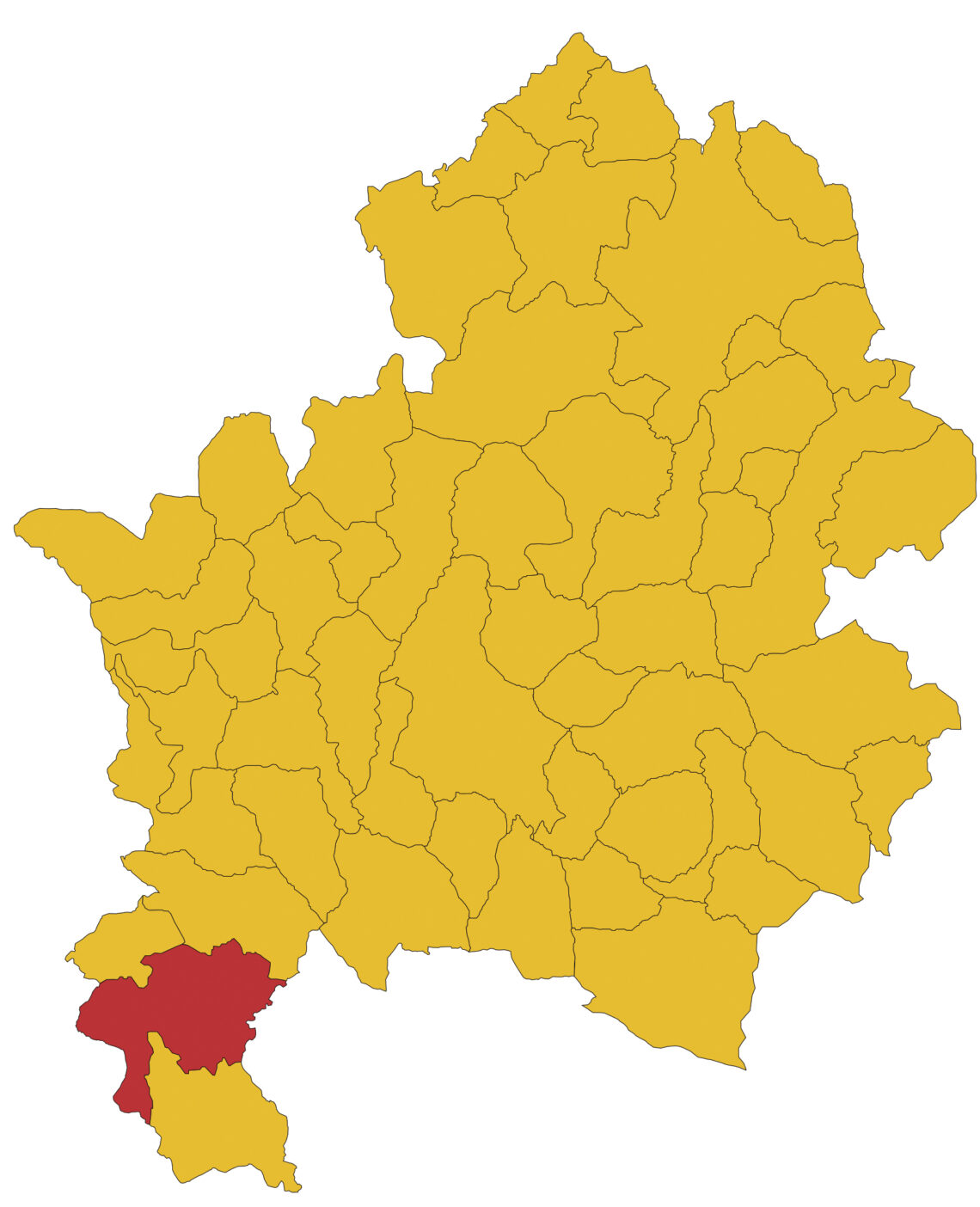-
AMHS Annual Wine-Tasting coming on Sunday, November 20
By Nancy DeSanti, 1st Vice President-Programs

Credit: Kelsey Knight/Unsplash For a fun autumn afternoon, you should definitely not miss out on our most popular event of the year, our annual wine tasting and luncheon. The event will be held on Sunday, November 20, 2022, at 1:30 p.m. in Casa Italiana. As in past years, members of the Washington Winemakers will be bringing samples of their production to share with the attending AMHS members, friends and guests.
This year, the lunch will be provided by one of everybody’s favorites, 3 Brothers Restaurant.
We owe a big thank-you to Jim Gearing, who is organizing the winemakers’ participation. Based on previous years, there is sure to be a variety of wonderful wines for tasting (and possibly some limoncello or grappa too).
The program will begin with a brief AMHS general meeting at which time we will elect members of the board of directors (please see page 4 for an article by the Nominating Committee about the candidates and the election).
Please make reservations on the Society’s website to make sure you don’t miss out on this fun event. In order to ensure the health and safety of everyone, the number of participants will be limited (first-come, first-served) and vaccination proof will be required. So bring your family members and friends—they will thank you. The deadline for paid reservations is November 17, 2022.
November/December 2022
-
Christmas Tree in St. Peter’s Square Will Come from Abruzzo Forest
By Nancy DeSanti
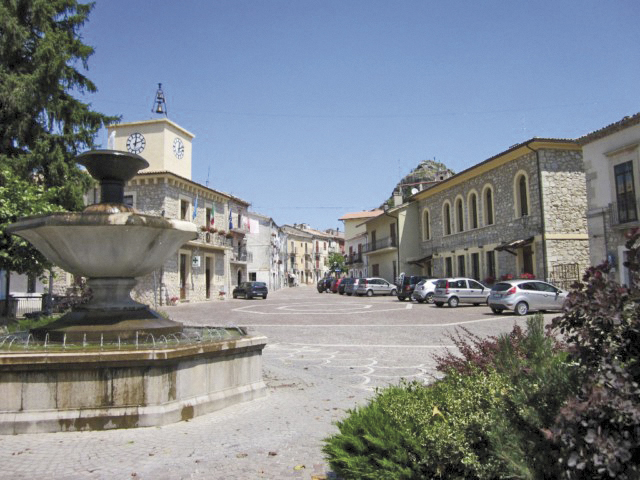
The central piazza of Rosello, site of fond memories for AMHS Past President Ennio DiTullio.
Credit: Courtesy of Ennio DiTullioThis year, the Vatican Christmas tree in St. Peter’s Square will come from the town of Rosello in Abruzzo’s Chieti province. This was great news for AMHS Past President Ennio DiTullio whose hometown is Rosello and who had just returned from several weeks there when the news broke.
According to Rosello Mayor Alessio Monaco, on December 3, 2022, there will be an audience with Pope Francis in the morning to include delegations donating the Nativity Scene in St. Peter’s Square (from Sutrio, in the province of Udine) and the Christmas Tree (from Rosello). The public ceremony will take place in the afternoon.
The tree will come from the Riserva Regionale Abetina di Rosello, which is considered one of the most important forests of the Appennines. Located on the border between Abruzzo and Molise, L’Abetina di Rosello and the adjacent forest of Pescopennataro preserve an almost intact strip of mixed forest of pine, white spruce, beech, yew and maple trees (including the very rare Lobel maple tree) as well as other species. Orchids are present in the undergrowth. It was in this area where Italy’s two tallest trees were found, each reaching over 50 meters in height.
The Rosello Nature Reserve was established by regional law in 1997, so this year marks its 25th anniversary. It is included in the areas protected by the European Union as a special area of conservation for the presence of species and habitats of community importance.
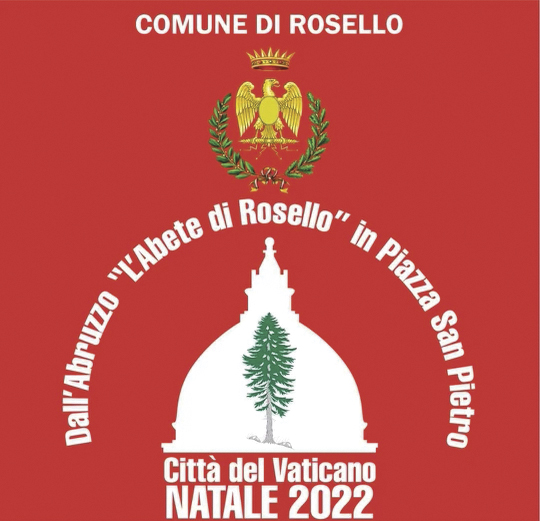
Rosello is proud to provide the Vatican Christmas Tree in 2022. The oasis which protects the forest is crossed by a deep gorge cut out by the Turcano river, and also protects numerous animal species, such as the wolf, the wild cat, the roe deer and the spectacled salamander. Birds such as black woodpeckers, hawks and wood pigeons also live in the forest.
What makes the Rosello forest one of the most important local reserves is the presence of fir trees. The fir trees of central Italy are different from the Alpine ones, since they have developed the ability to adapt to warm summer temperatures.
Ennio said the news about the Christmas tree from the Rosello forest brought back fond memories of when he was growing up in that town. He recalled that city hall would allocate a certain amount of wood to each family according to the size of the family. Then each family would take the wood from the felled trees to their home to help them stay warm in the winter. Ennio said when he was a boy, he would always help his father, who was a farmer and blacksmith and who would bring the wood by horse to their home, where Ennio would help unload it.
November/December 2022
-
A Message from the President
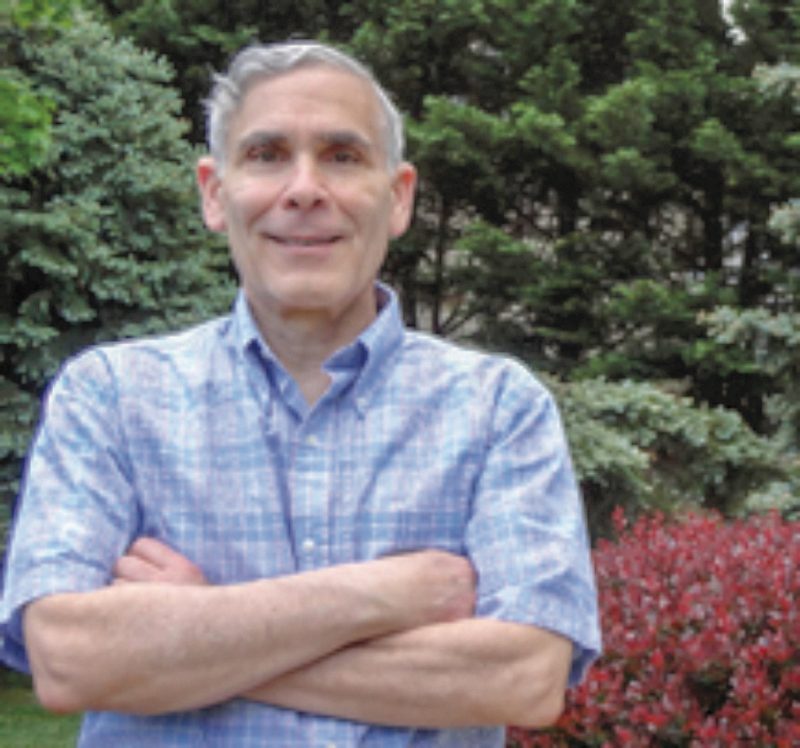
Dear members and friends:
I hope that things are going well for you and that you are enjoying the fall weather. We kicked off our fall with a program on September 18th. We gathered at Casa Italiana Sociocultural Center (CISC) for a lunch and presentation by Eric Denker, the former Senior Lecturer at the National Gallery of Art. Dr. Denker talked about Venetian artists and their works in a way that made them accessible to those of us without a background in painting or art in general. It was a very illuminating talk. Osteria da Nino catered the lunch and, as usual, lived up to its great reputation.
Our next program will take place on November 20th at CISC. It will be our annual wine tasting event, which has always been a favorite among our members. Be sure to put it on your calendar and sign up early. Elections to positions on our Board of Directors will be held at this event. The candidates are Julie Finegan Dal Forno, John Iazzetti and Teresa Margaret Talierco. I thank them for stepping up to lend us their abilities. They will be replacing the outgoing members John Dunkle, Joseph (Sonny) Scafetta, Jr. and Chris Renneker. It is hard to overstate the accomplishments of our outgoing members, who have brought intelligence, commitment and congeniality to the Board. Their contributions have moved the Society forward in important ways, and their absence will create a challenge for the Board. I trust that their successors will make their own mark in taking our organization into the future.
Following our wine tasting event, we will hold a classical music concert on December 11th at CISC. It will be a piano concert performed by a young Italian American couple based in Rome. They are Italian-American in the sense that Katrina was born and raised in Chicago while her husband Vincent was born and raised in Abruzzo. They will play a number of Italian-themed classical pieces in the four-hands style, in which both of them will play a piece while seated at a single piano. They are extremely talented pianists who have recently finished their training and are traveling to Washington to perform for us at CISC. Please mark the date on your calendar and be prepared to be impressed and delightfully entertained.
Speaking of December, be on the lookout for our annual scholarship fundraising letter. As you probably know, every year we award a $4000 scholarship to two outstanding students who have demonstrated both academic excellence and an interest in the Italian language and culture. We believe that these scholarships are the most effective way in which we can fulfill our mission of passing on our Italian heritage to the generations that follow. Of course, we have to raise the $8000 each year to make this happen, as we do not receive any outside assistance or support. So any contribution will play an important part in keeping this key program alive and strong. In this regard, please note that our website now enables online donations, which provides an easy and convenient way to support our scolarships.
On the topic of scholarships, we are introducing a new one that also will be awarded annually starting next year. It will be known as the Angela Lastrico Raish scholarship, in honor of the donor whose estate will fund it. It will differ in two ways from our AMHS scholarship. First, it will seek out exceptional students who are studying in the music arts field. Second, the AMHS will not fund the scholarship, which will be supported, as noted, by donations made in honor of Angela Lastrico Raish, whose estate has provided the seed money for the scholarship. Our AMHS fundraising supports only our traditional scholarship, and the Society’s role in the new scholarship is solely that of managing it. The two scholarships do share an important characteristic – they both aim to reward outstanding students who are either Italian American or who have demonstrated an interest in Italy or Italian studies. You can find additional information about the scholarship inside this edition. Its initial application period will commence this December, concurrently with our AMHS scholarships. The application form, requirements for applying, and eligibility criteria will all be under the scholarship tab of our website.
Don’t forget to check out our new online shop, which you can find on the “Our Heritage/Shop” tab of our website. Recall that I sent out a special notice on September 26th regarding the opening of this AMHS shop. There are dozens of products available, all featuring our AMHS logo. The store will allow our members and friends to select high quality items from a large selection and will also permit us to make an online payment. Please check it out for some great ideas for holiday gift giving.
Finally, I want to bring to your attention an impending change in the publication of our Notiziario. Due to the increasing costs of paper and postage, as well as the increasing labor involved in designing a print edition, we have to discontinue the paper copy. Accordingly, starting next year, all members who have an email address will receive only the electronic version. The edition in your hands now will be the last printed one. Such a change has become necessary if we are to continue to produce a high quality publication that will keep our members informed of what is happening in the AMHS. You can get additional information on this change inside this edition of the Notiziario.
Thanks for reading and enjoy the remainder of fall and the upcoming holidays.
Best regards,
Ray LaVerghetta
November/December 2022
-
Candidates for the AMHS Board of Directors
By Maria D’Andrea-Yothers, AMHS Nominating Committee
The Nominating Committee is pleased to announce three candidates to serve on the AMHS Board of Directors: Julie Finigan Dal Forno, John Iazzetti, and Teresa Margaret Talierco. Elections will be held at the general membership meeting on Sunday, November 20, 2022 at Casa Italiana Sociocultural Center.
These candidates, if elected, will replace John Dunkle, Chris Renneker, and Joseph “Sonny” Scafetta, Jr. We greatly appreciate their three years of service and all that they have contributed to the mission and objectives of the Society.
Additional nominations may be made from the floor during the November 20 meeting, after which the nominations will be closed, and the election will be held. The elected board members shall assume office on January 1, 2023, and will be installed at the January 2023 general membership meeting. The term of office is for three years.
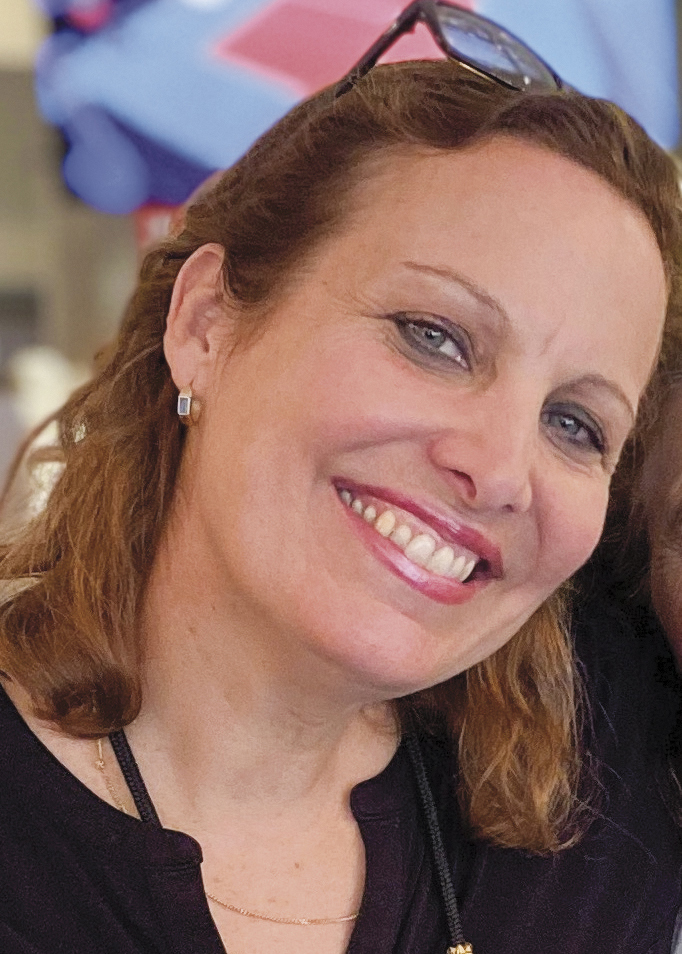
Julie Finigan Dal Forno
Julie was born and raised in Massachusetts. After completing her Master’s degree at Johns Hopkins University, she moved to Rome for six years, to Bangkok, Thailand, for two years, and Singapore for five years. Julie has taught high school for over twenty-five years on three different continents and currently teaches at the Bullis School in Potomac, Maryland.
She has had a lifelong interest in Italian language, literature, and culture and is a member of the Italian Language Foundation (ILF) and Italians in DC. Julie enjoys traveling to Italy each year and skiing whenever she can. Julie is married to Corrado and they have two sons, William and Nicholas. They reside in Potomac, Maryland.
John Iazzetti

John was born in what is known as the Little Italy section of the Bronx, hinged by Arthur Avenue. His maternal great-grandfather emigrated from Agnone in Molise in 1886 and settled in the Bronx. His great grandmother followed in 1899. His father’s family emigrated from Avellino.
John worked at Citibank fresh out of high school and attended college at night, earning a BS in Marketing. He later received a Master’s degree in Religious Studies and a Postgraduate in Theology. He is a former member of the Westchester County Genealogical Society, and a current member of the Sons of Italy and the Knights of Columbus. He is married with 4 children and 4 grandchildren. He is currently working on his Italian dual citizenship.
Teresa Margaret Talierco
Teresa was born in Coatesville, Pennsylvania, on April 15, 1951. Her paternal grandfather, Giovanni Talierco, had emigrated from the island of Ischia in the Bay of Naples and her paternal grandmother, Olivia Nerone, had emigrated from the city of Naples.
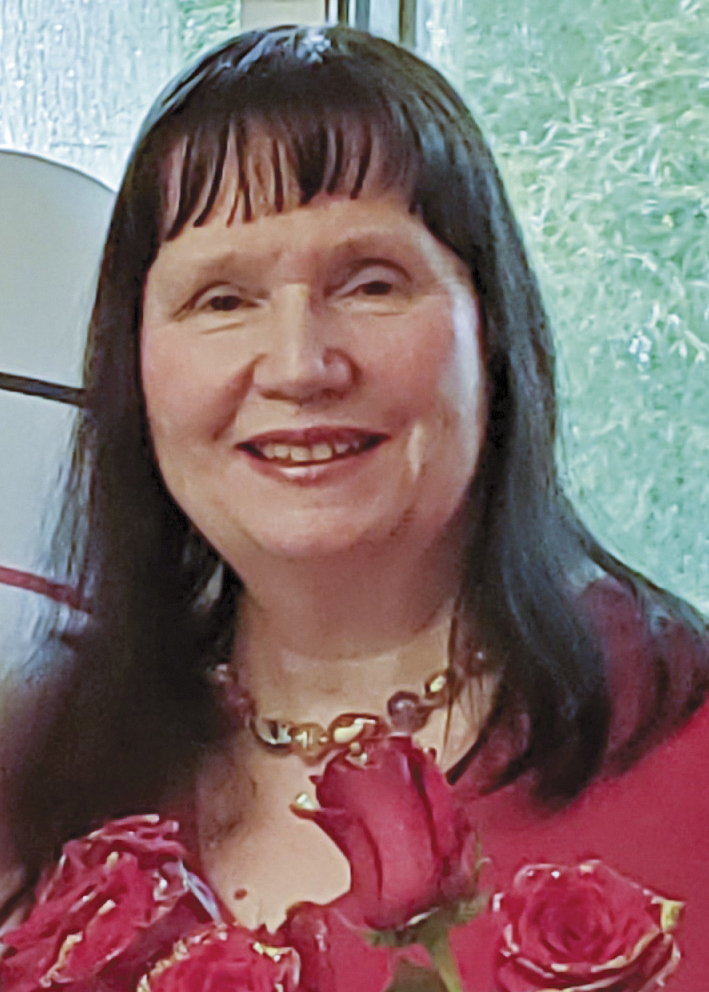
Teresa graduated from Coatesville High School in 1969 and received a full scholarship to attend Trinity College (now University) in Washington, D.C. She earned a Bachelor of Arts degree in psychology in 1973, and then she earned a Master of Arts degree in sociology from Loyola University in Baltimore in 1975. After graduation, she moved to Falls Church, Virginia, where she was employed as a Licensed Professional Counselor by the Dominion Psychiatric Hospital.
In July 1982, she joined the Avanti Italiani Lodge in Alexandria, Va., which was associated with the Order of the Sons (and now Daughters) of Italy in America. She served as the lodge treasurer from 1983 to 1984 when she was elected president. She served two years until July 4, 1986, when she married Joseph “Sonny” Scafetta Jr. They honeymooned in Italy, visiting both her family in Rome and Ischia and her husband’s family in Rome and Abruzzo. Because the lodge was for singles only, Teresa and her husband transferred to the George Washington Lodge in Arlington, Va. She was elected vice president in 1991 and served for two years until she was elected president, serving from 1993 to 1995.
When their son, Joseph Anthony Scafetta III, was born on October 28, 1998, in Washington, D.C., Teresa resigned from the Dominion Psychiatric Hospital and started a private practice in McLean, Virginia, specializing in counseling teenagers, young adults, and families with young children.
When the George Washington Lodge was dissolved, Teresa and her husband transferred their memberships to the Italian Heritage Lodge in Fairfax, Virginia, where they remain active. Teresa, her husband and son last visited their families in Italy in 2002. After her husband became a member of the Abruzzo Molise Heritage Society (AMHS) in 2008, Teresa and their son joined. Teresa has been active in AMHS events and activities.
November/December 2022
-
Three Gentlemen from Venafro
By Joseph “Sonny” Scafetta, Jr.
(Editor’s Note: Continuing our series of articles by Sonny Scafetta about notable individuals from Abruzzo and Molise, we feature three men from the city of Venafro, which happens to be the birthplace of my paternal grandfather. We hope you enjoy reading about these historical figures. – Carmine James Spellane)
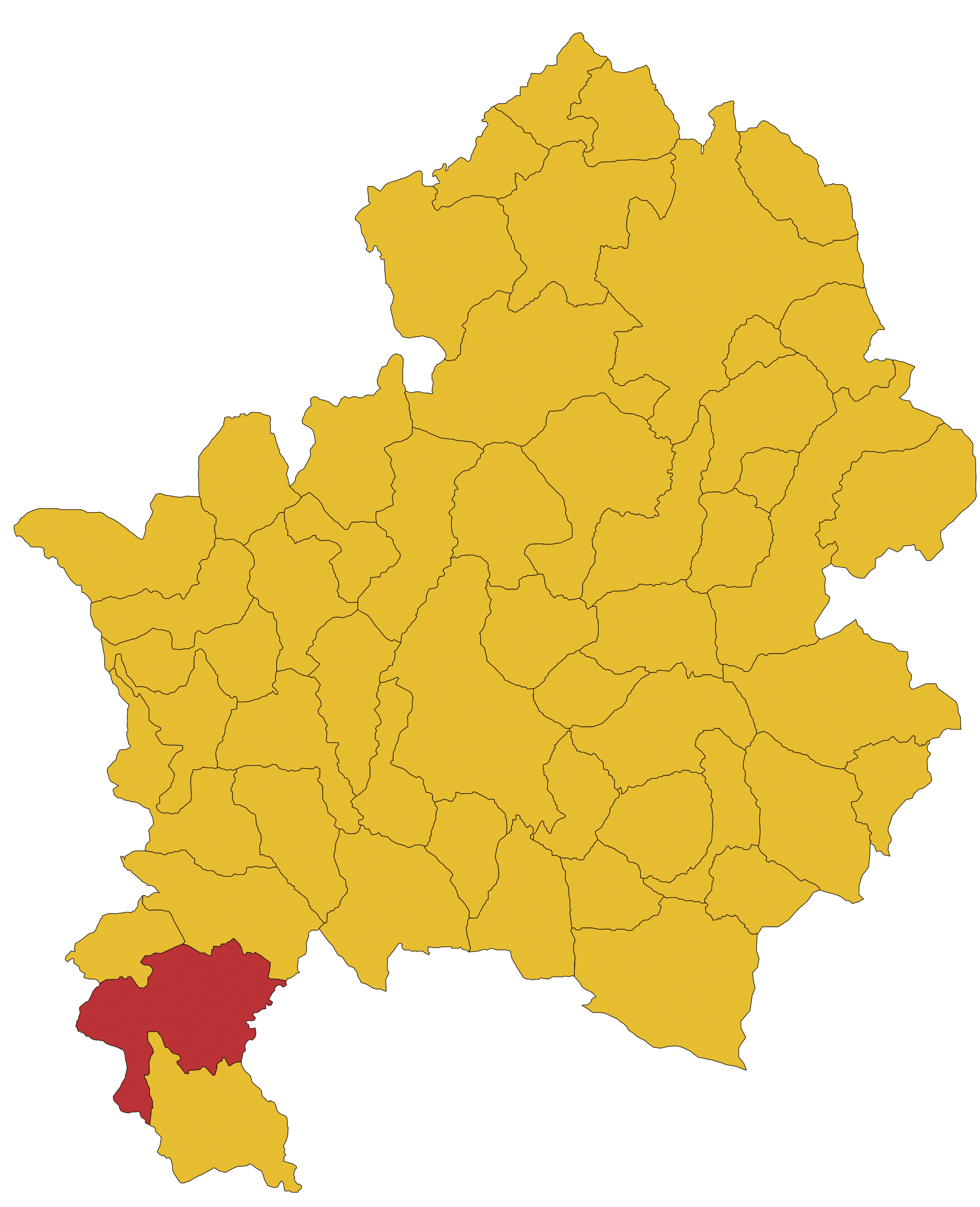
Venafro (in red) as situated in the province of Isernia.
Credit: Vonvikken
Antonio Giordano
Antonio Giordano was born in 1459 in the city of Venafro (population 11,079 in the 2021 Census) in the province of Isernia in the region of what is now Molise. He was tutored at home at the expense of his wealthy parents. Antonio at the age of 18 attended the University of Siena from which he graduated with a degree in jurisprudence in 1481. He then had a successful private legal practice for seven years before he became a law professor at the University of Sienna in 1488. In November 1493, he was elected at the age of 34 to be appellate judge for the city.
In 1494, the military forces of French King Charles VIII (1470-1498) invaded the northern Italian city-states. Giordano was arrested and forced with other political prisoners to follow the French forces on foot for their entire march to Rome. Upon reaching Rome, Giordano and others were released by a direct order from the king himself. When Giordano returned on horseback to Siena, he became an advisor and then the private secretary to the Lord of Siena, Pandolfo Petrucci (1452-1512). Giordano was later named counselor and then Prime Minister of Siena by Petrucci. About this time, he became known as Antonio da Venafro (Anthony from Venafro).
In October 1502, as Prime Minister, Giordano traveled to Palermo on the island of Sicily to represent Siena at the Diet of Magione, which was a Norman church in the city, to negotiate a mutual defense pact with other Italian city-states against the Papal States. Later, Giordano traveled under the military protection of the mercenary leader, Paolo Orsini (1450-1503), to Imola, a section in the city of Bologna in Emilia-Romagna, to sign a peace treaty between the adherents to the Diet of Magione and Cesare Borgia (1475-1507) who was the mercenary leader for the Papal States. After the death of Lord Petrucci in 1512, Siena came under constant military and political pressure from Pope Leo X. Consequently, Giordano resigned as Prime Minister in 1515 and returned at the age of 56 to live in his native town of Venafro.
After four years of self-imposed exile, he left Venafro and moved to the University of Naples where he became a professor of jurisprudence in the Fall of 1519. Because he was perceived as neutral by the Neapolitan king, he was appointed to be a member of the Consiglio Collaterale (Collateral Council) which was responsible for judging cases concerning political matters, as opposed to legal matters. He continued in this post until his death there in Naples in 1530 at the age of 71. He never married.
Giordano was a well-respected statesman. He was highly regarded by contemporary historians, such as Francesco Guicciardini (1483-1540) and Niccolò Machiavelli (1469-1527). For example, in chapter 22, where private counselors are discussed in Il Principe (The Prince), written by Machiavelli about 1513 and published posthumously in 1532, Giordano is described as “an excellent minister”.
Sources:
- https://en.wikipedia.org/wiki/Antonio_de_Venafro
- https://en.wikipedia.org/wiki/Venafro#People
- https://en.wikipedia.org/wiki/Charles_VIII_of_France
- https://prabook.com/web/pandolfo.petrucci
- https://www.wondersofsicily.com/palermo-magione.htm
- https//en.wikipedia.org/wiki/Paolo_Orsini_(condottiero,_born_1450)
- https://en.wikipedia.org/wiki/Imola
- https://en.wikipedia.org/wiki/Cesare_Borgia
- http://forhistiur.net/2016-09-freda/
- https://en.wikipedia.org/wiki/Francesco_Guicciardini
- https://en.wikipedia.org/wiki/Niccolò_Machiavelli
Amico Santabarbara
Amico Santabarbara was born about 1490 in the city of Venafro in the province of Isernia in the region of what is now Molise. Because he was not the eldest son, he would not inherit the family estate. Since his family was prestigious and wealthy, Santabarbara decided, after he completed his education at 18, to fund a mercenary force and embrace a military career. He soon married and had a son Lucio who later accompanied Amico on his military exploits. When Santabarbara began his adventures, he became known as Amico da Venafro (Friend from Venafro).
Nothing is known about his engagements until 1525 when he became allied with another mercenary leader, Lodovico de’ Medici (1498-1526), also known as Giovanni delle Bande Nere (John of the Black Bands). Initially, Amico was a division leader, but he soon became Lodovico’s chief assistant. After Lodovico was killed during the siege of the city of Mantua in the region of Lombardy on November 30, 1526, Amico took his forces to Florence where he was hired with three other mercenary leaders by Zanobi Bartolini Salimbeni (1485-1533), one of the ten magistrates ruling the city, to help defend it against the army of King Carlos V of Spain.
In August 1529, Amico defended the town of Cortona in the province of Arezzo in the region of Tuscany against the Spanish, along with another mercenary leader, Pasquino Corso (c.1496-1532). However, during the next month, he abandoned Cortona without confronting the Spanish further because of an epidemic which had hit the infantry under his command. A month later, he went to guard Florence, flanking the forces of another mercenary leader, Marzio Orsini (c.1464-1529), on the hill of Giramonte outside the city. Near the town of Barduccio, he drove away the infantry forces under the Spanish-allied mercenary, Piermaria dei Rossi. Amico and his men then entered Florence where he was made one of four mercenary captains under Malatesta Baglioni (1491-1531) engaged to defend the four city walls against the Spanish siege.
In March 1530, during the fighting, he was wounded in the arm by a shot from a Spanish harquebus which was a heavy, portable rifle-like gun in which powder was ignited by a match. He was also scalded by the burst of a small barrel of gun powder. Later, another mercenary leader, Stefano Colonna (c.1500-1548), ordered the wounded Amico to tell his men to take certain action, but Amico ignored his order. Colonna was offended and vowed revenge against Amico. So, on May 5, 1530, alone and unarmed, outside the Church of Saint Francis, Amico was attacked by a group of ruffians hired by Colonna and died from 27 knife wounds. Amico was 40 years old.
Sources:
- https://it.wikipedia.org/wiki/Amico_da_Venafro
- https://en.wikipedia.org/wiki/Venafro
- https://en.wikipedia.org/wiki/Giovanni_delle_Bande_Nere
- https://en.wikipedia.org/wiki/Mantua
- https://www.treccani.it/enciclopedia/zanobi-bartolini-salimbeni
- https://en.wikipedia.org/wiki/Cortona
- https://en.wikipedia.org/wiki/Pasquino_Corso
- https://www.geni.com/people/Marzio-Orsini
- https://en.wikipedia.org/wiki/Malatesta_IV_Baglioni
- https://it.wikipedia.org/wiki/Stefano_IV_Colonna
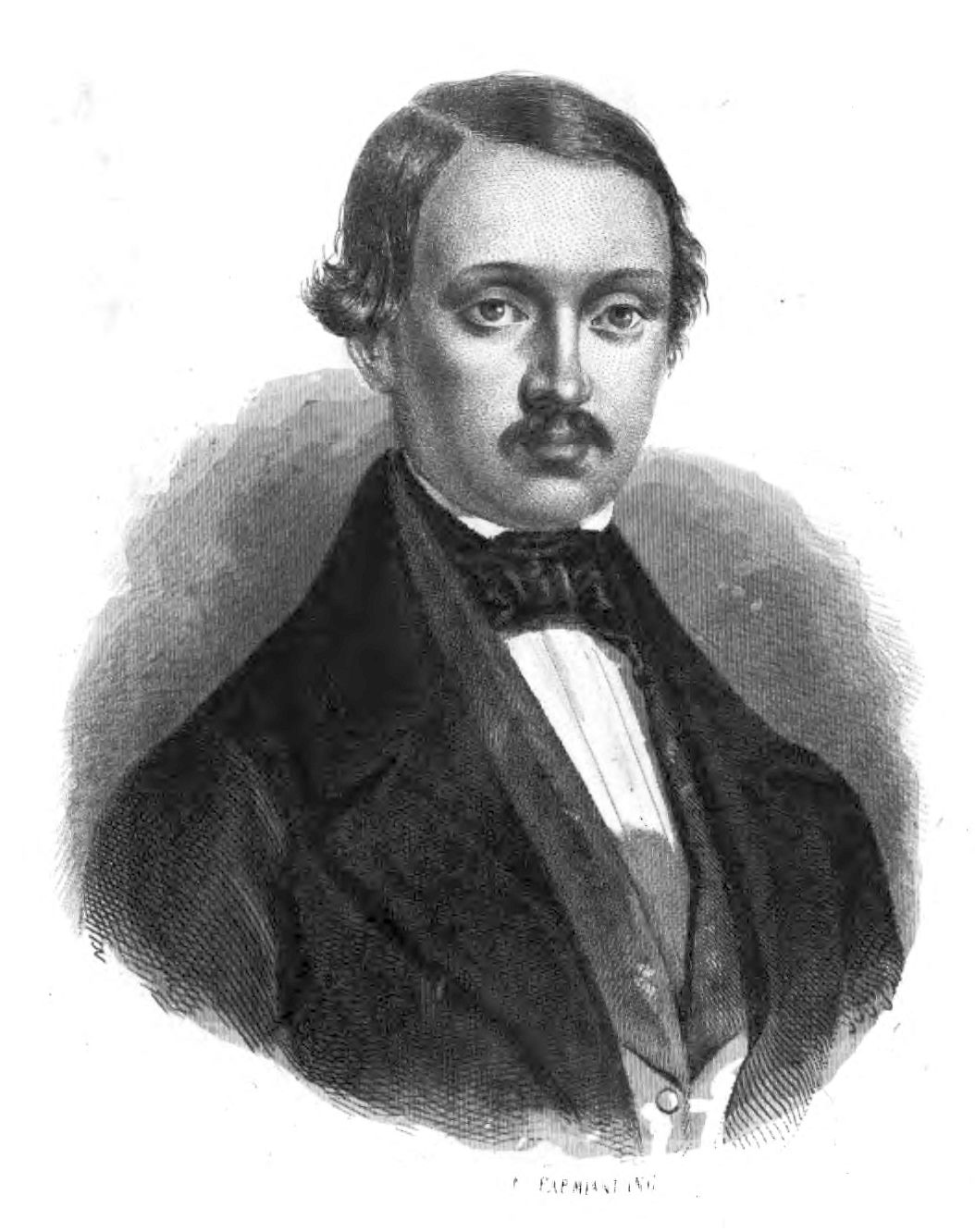
Leopoldo Pilla Credit: Wikipedia Leopoldo Pilla
Leopoldo Pilla was born in the city of Venafro in the province of Isernia in the region of what is now Molise on October 20, 1805. His parents were Nicola Pilla, a doctor and scholar, and Nicola’s second wife, Anna Macchia, who died when Leopoldo was 13. After his father married again, Leopoldo was sent to Naples to live with a family friend. There Leopoldo studied in the private school of Basilio Puoti (1782-1847) who was a noted literary critic, lexicographer, and grammarian. After graduating from Puoti’s school, Leopoldo entered the University of Naples at 16 to specialize in veterinary medicine. After graduation and qualification as a veterinarian in 1825, he continued at the university to study general medicine and became a doctor in 1829.
His professional career began in the employ of the Bourbon government after he graduated. In 1831, he was sent to Vienna, Austria, to study cholera. There he worked in a military hospital and began to take classes in geology and mineralogy. In 1841, Pilla was appointed professor in charge of geology and mineralogy at his alma mater. After a year, Pilla was hired to teach the same subjects at the University of Pisa. He then began to publish articles in French technical journals about various topics in his two chosen fields. In 1847, he published his opus magnum, the two-volume Trattato di Geologia (Treatise of Geology), for which Pilla is primarily remembered.
When Austria invaded northern Italy in early 1848, Pilla enlisted in the Tuscan University Volunteers and became a captain. After training, his unit was sent to Campo delle Grazie (Field of the Graces) near the municipality of Curtatone in the province of Mantua in the region of Lombardia to secure the river front. On May 29, 1848, Pilla and the students were killed by Austrian machine gun fire at the Osone bridge which they were guarding. Pilla was 42. He never married. A plaque marks the house in which he was born in Venafro. Also, an elementary school is named in his honor in his home city.
Sources:
- https://en.wikipedia.org/wiki/Leopoldo_Pilla
- https://en.wikipedia.org/wiki/Venafro
- https://en.wikipedia.org/wiki/Basilio_Puoti
- https://it.wikipedia.org/wiki/Matteo_Tondi
- https://en.wikipedia.org/wiki/Curatone
November/December 2022

